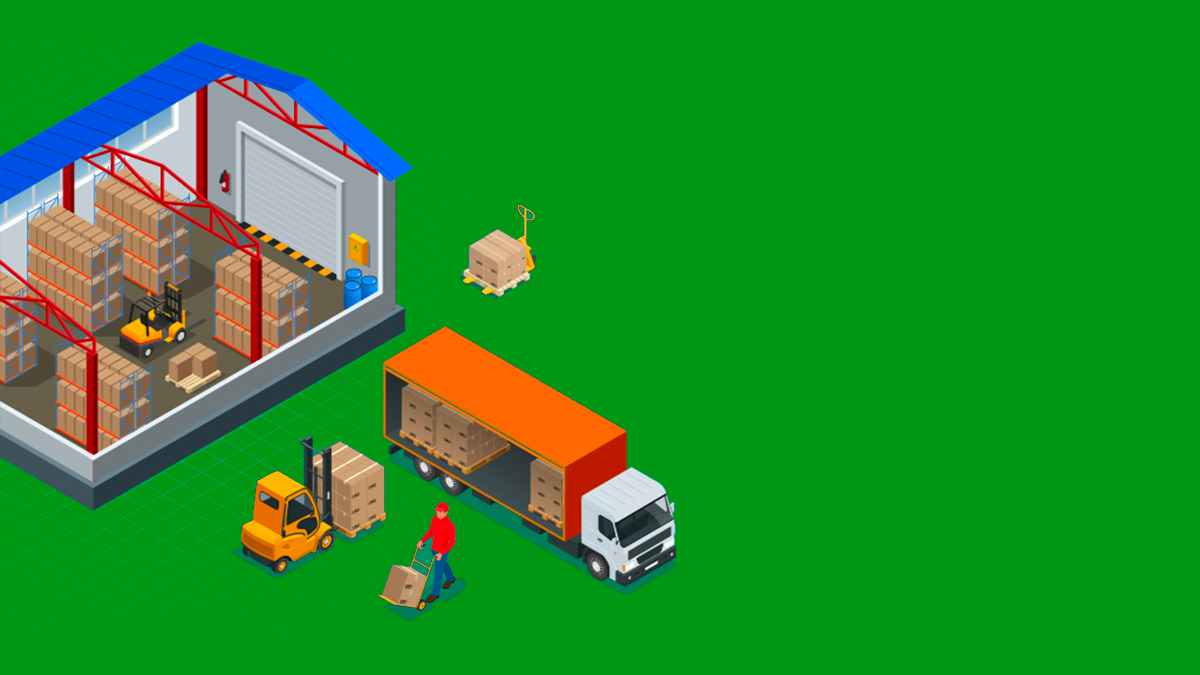In E-commerce Development
At a large online retailer's warehouse, up to several million operations take place every day. How should the logistics of such a warehouse be organised?

Management

The special features of an eCommerce warehouse
The ecommerce warehouse has little in common with conventional Class A warehouses. Except for the larger than usual number of gates and the car park, which is often almost entirely occupied by vehicles. The differences, however, are all too apparent once you get inside this complex logistics facility. Whereas for some manufacturing and retail businesses, warehouses are a necessary cost item, for e-commerce the supply chain, logistics and fulfilment (as its main element) are the main production capacity and something that can set an online retailer apart from the competition. For this reason, the warehouse is usually equipped and staffed to a much greater extent than the average modern warehouse. Hence the higher demands on the quality and load-bearing capacity of floors, columns, increased electrical and utility capacities as well as the need to allocate more space for administration and amenities.
What fullfilment includes
Modern-day fullfilment is far more than a complex logistical process. It is an entire production system with unique elements. Therefore, as with any manufacturing process, substantial investments in machinery and equipment are required to achieve high efficiency and competitiveness. Fulfielding encompasses all the classic warehouse operations - receiving goods, placing them in storage, storage itself, order picking, distribution to shipping destinations, and shipment. However, its distinctive feature is that it achieves maximum processing depth, i.e. goods are often received, stored, picked, distributed and dispatched piece by piece. Unlike in wholesale warehouses, where the main load unit is a pallet or, on rare occasions, a box, a fullfilment centre handles piece goods. Therefore, the ratio of the number of daily transactions between a wholesaler and a fullfilment centre can be as much as 100 times, in favour of the latter.
Fullfilment equipment
Because fullfilment is more of a manufacturing operation than a warehouse, mainly designed for storage, then, as with any manufacturing operation, significant investment in equipment is required to achieve high efficiency and increase competitiveness. Many market leaders have already gone through a process of extensive development, whereby the growing need for fullfilment capacity was met by increasing storage and production space and workforce. Nowadays, virtually all repetitive logistics operations are standardised and subject to automation. In most modern fullfilment centres, almost all key processes are automated to varying degrees, with the possible exception of storage.
Perspectives on fullfilment logistics
E-commerce as an industry in today's environment could well claim to be "the most promising" in terms of development. The history of e-commerce development in the last decade and a half already gives sufficient grounds for the most optimistic expectations. Changing consumer demand, the "digitalization" of the economy (in general) and retail - in particular, the concentration of the population around large cities and agglomerations are in themselves quite powerful factors that positively influence the development of online commerce. However, while it used to be about the "rapid evolution" of retailing, the pandemic, isolation measures and personal epidemiological security have added a whole new dimension to the above factors and made the development truly "revolutionary". The enlargement of e-commerce and the accompanying complexity of supply chains makes the prospects for online commerce logistics and fullfilment, as its core element, virtually limitless.
ECommerce Warehouse of big data projects
Data Warehouse is a strategic collection of all system data support for all system data support. By analysing data in the data warehouse, it can help businesses to improve business processes, control costs and improve product quality. Warehouse Data is a structured decision support system (DSS) data environment and online application data source analysis. Explore the data warehouse and solve the problem of retrieving information from the database.
Data Warehouses are not the final destination of the data, but to prepare the final destination of the data. These preparations include data: cleansing, transfer, classification, reorganization, merging, disassembly, statistics etc.
- Log data: Data collection via SDK (SoftVevelopmentKit) (Collection JS, Java code). Incident monitoring, data is encrypted, compressed, transcoded and can be sent in real-time. This can also be sent. according to network conditions. It needs to be sent to the back end log server.
- Business Data: The data recorded in the database, this data is recorded on the basis of the transaction mechanism recorded data of each business process.
Most situations aimed at a business are for reports (to analyze various indicators), portraits, recommendations, machine learning requires master algorithms, risk control: risk control, financial industry -> Bank, the most important is to depend on whether you have the ability to repay the ability to repay.
"
